When you start playing Rush Royale, you definitely want to know which units you should acquire and/or upgrade first, especially when you start building up your Arena Rank and getting Chests by various means. Our Rush Royale tier list aims to help you decide which units you should take to a PvP or a Co-op match, and which ones you should prioritize leveling up. So stay with us and read on, as we will showcase the best units that are currently available in the game!
In Rush Royale there are four levels of unit rarity: Common, Rare, Epic, and Legendary. These primarily affect which chests they can be found in and how often you see them for purchase in the shop. Rarer units will also require more coins for upgrades, and simply getting additional copies is a challenge in itself.
Though the game says Legendary units are powerful, they are still subject to the random results of summoning and merging, so you can still lose a given match simply because your main source of damage or crowd control just did not show up in either action. Unless otherwise stated, all units will always attack the first opponent in line.
It is worth noting that at the time of writing, we have obtained or observed all available units up to Arena Rank 9. Units will be arranged in their unlock order, starting with the first five units you begin the game with.
The Founding Five (and Friends)
As we discussed in our Rush Royale beginner’s guide, you start the game off with five units, though you also have three more to customize your starting loadouts as you see fit. Until then, you’ll generally resort to these units until you unlock and acquire new ones.
Unless you get favorable chest drops, your initial source of DPS will generally be the Archer, who sports a high attack speed on top of in-match upgrades, further boosting the rate of fire. A fully-upgraded Archer with a high merge rank essentially fires arrows like nobody’s business. Their damage per shot, however, is low.
Crowd control duty is split between the Fire Mage, Lightning Mage, and Cold Mage. The Fire Mage’s attacks deal damage in a small area of effect; the Lightning Mage’s attacks will jump from their target to the two closest enemies; and the Cold Mage’s attacks slow down whoever they hit.
Compared to the Archer, you will see these guys more often even when you can get better units, as they perform their roles more consistently on top of being more likely to drop from chests. Once you start building up your forces and get good chest drops, they can be exchanged.
Your last starting unit is the Poisoner, who is initially your main way of dealing with durable monsters, be it minibosses or actual bosses. The damage over time stacks with multiple Poisoners, but their overall performance is poor. In the end the Poisoner will probably be the first unit you will dismiss in favor of someone else, with boss-killing roles changing accordingly.
Among the additional starters, the Thrower sports the highest damage-per-shot with a good starting attack speed to boot. However, who he targets is completely at random. This means that he suffers against hordes of regular enemies but shines against bosses (barring the Tamer, who can summon monsters to distract him). Do not fill up your board with Throwers, because while they can easily kill monsters the moment they spawn in, all it takes is a miniboss to screw things up and let less durable opponents pass through.
The first rare unit you can acquire is the Priestess, whose main draw is the ability to generate mana when she is merged or destroyed. That alone makes her an ideal choice for early-game loadouts as the mana generated can easily go to summoning more units or upgrading them instead. Though not as efficiently as dedicated attackers, she is still capable of attacking enemies and can hold the line just as well. You will only replace her once you get more efficient ways of generating mana.
The last starter you can find, and the first Epic-tier unit you have, is the Reaper. The Reaper is fairly average damage-wise and who he targets is at random. However, unlike the Thrower, the Reaper has a small chance of instantly killing his target. This sounds enticing, but the instant-kill chance has no effect on bosses. In a way, this makes him the opposite of the Thrower: potentially great for clearing mooks but near-useless against bosses. Boosting his attack speed via merges or buffs is an option, and the instant-kill can potentially turn a match around if you’re lucky.
With the starting units out of the way, we now move to the unlockable units we have observed and used during our playthroughs.
For the ease of reading, the following section is split into three parts and a given unit’s rarity is mentioned in parentheses.
Arena-Unlocked Allies Part 1: Moving Up The Ranks
Beginning with Arena Rank 2, you will start unlocking new units for purchase or potential chest drops. Unlike your starters, some of these units have abilities they can activate during a match, with a cooldown between uses. These can range from personal buffs, to affecting enemies, or to buffing nearby units.
Take note: they will activate these abilities even when there are no enemies on the field, potentially wasting it until their cooldown finishes. Other units are built solely for buffing adjacent units (or debuffing your opponent’s towers) and cannot attack by any means, so unlucky summons, or a bad roll from either the Bedlam or unit merges can cost you a match. In their case, merge rank will simply improve the effectiveness of their buffs.
Your first set of new units is unlocked when you reach Arena Rank 2:
• The Engineer (Epic): Gains bonus damage for every Engineer adjacent to him indicated by his gears turning and sparking, with the bonus maxing out at six Engineers close together. Even without his ability, he’s easily one of the most reliable units you can find and a common sight in most builds.
• Frost (Legendary): The first Legendary-tier unit you unlock, Frost casts a blizzard every seven seconds that slows down any enemies on the field, in exchange for low damage per shot. This blizzard will not affect enemies that spawn in after he casts it, so having more than one copy on the board can keep enemies slowed down as much as possible.
• The Rogue (Common): Every attack he deals gains a random, flat damage boost between one and your current critical damage multiplier. This makes using him somewhat counterproductive, as upgrading your units means that the Rogue’s damage range becomes larger and his performance becomes more unpredictable.
• The Hunter (Common): Behaves similarly to the Thrower, with high damage but random target selection. However, the first shot on his chosen target deals significantly increased damage which makes him great for killing enemies right off the gate. Keep me in mind that the monsters’ health scaling can make this bonus less potent as a match goes on.
In conclusion, the Engineer will most likely be your go-to for damage in both PVP and co-op, should you have him, while the Hunter can be used for fast wins in PvP matches thanks to his bonus damage. The Rogue’s damage randomization makes him rather unreliable to use, and should be limited to increasing your critical damage multiplier. In the event you get Frost, he can serve as an excellent replacement to the Cold Mage in your chosen loadout.
You will start encountering passive units from Arena Rank 3 onwards:
• The Bombardier (Common): His attacks have a small chance of stunning his target for four seconds, interrupting movement and in the case of bosses, ability casts. The Bombardier will prioritize attacking enemies that have yet to be stunned, but otherwise targets the first monster in line. To prevent stunlocking for easy kills, both the stun chance and the stun duration go down every time a stun triggers, to the point where a given target becomes effectively immune to stuns until it is killed.
• The Banner (Rare): Your first passive unit, the Banner simply increases the attack speed of units adjacent to it. Buffs from multiple Banners do NOT stack.
• The Portal Keeper (Epic): A support-oriented unit who can trade places with any unit of the same rank. Great for getting your forces in the right positions to take advantage of buffs.
• The Sharpshooter (Rare): This unit is dedicated towards felling meaty targets. The Sharpshooter will prioritize enemies with the most health, and deals bonus damage to both bosses and minibosses. Don’t expect him to work well against regular monsters as he will constantly switch targets once their health drops low enough.
To summarize, the Portal Keeper complements most passive units very well, and makes setting up Engineer “blobs” a breeze early into a match. Just don’t forget to merge any spare Portal Keepers once your units are in position, so they can hopefully be rolled into better-suited units. Having a few Sharpshooters on the board to deal with (mini)bosses is okay; just don’t make them the bulk of your forces’ damage.
Although the Bombardier’s stun chance eventually drops to nil on a given target, those few seconds can mean the difference between an enemy making it to your castle or not, on top of interrupting a boss’s first ability cast before it can take effect. Throwing everything you have while the boss cannot counter it is always good.
Units from Arena Rank 4 onwards (from here, you will no longer unlock new common-tier units):
• The Magic Cauldron (Rare): A passive unit that generates a small amount of mana every eight seconds, with the amount produced affected by both merge rank and upgrade level.
• Boreas (Legendary): A legendary unit you can consider as an “upgrade” to the Archer. Compared to the Archer’s passive attack speed buff, Boreas instead activates a self-buff that comes in two stages: it starts with a five-second buff that increases his attack speed, with the last second off that buff increasing his critical hit chance as well. There will be a six second cooldown afterwards before he can buff himself again. His damage per shot is still low.
• The Mime (Epic): A support unit that can be merged with a unit of the same merge rank, essentially serving as a free rank-up to the given unit. The merge result is STILL random, however.
• The Sentry (Rare): His damage gains a permanent boost every five seconds as long as he remains untouched, either from damage or from merging. Taking advantage of this ability can be a bit tricky as a result.
Compared to the Priestess, the Magic Cauldron provides a steady source of mana in exchange for damage, so be careful about getting too many of them on your board. Using the Sentry is a bit difficult, as you have to decide whether to merge him and lose his accumulated damage, or leave him alone and risk having him fall behind.
The Mime’s ability to serve as a free rank-up is both a blessing and a curse, as you can get another unit from that merge, or end up ranking the mime to a point where no other unit can merge with them. Boreas’s buff sounds impressive on paper, but remember that his shot damage is low so you have to find a way to deal with it, either through buffs or more damaging units backing him up.
This group of units is unlocked at Arena Rank 5:
• The Alchemist (Rare): Rather than damaging enemies directly, the Alchemist creates poisonous but short-lived puddles at random areas on your lane every five seconds, dealing damage to anyone who crosses the puddles.
• The Vampire (Epic): Bites incoming enemies, causing them to generate a small amount of mana every five seconds for as long as they live. Mana generated is affected by upgrade level, and like the Bombardier, the Vampire will choose unbitten enemies before focusing on the first enemy in line.
• The Chemist (Rare): His chosen target takes increased damage from all sources. Just like the Vampire and Bombardier, the Chemist will focus on unaffected targets over the first target in line.
The Alchemist’s random targeting of your lane means that his overall damage output becomes very inconsistent, and even with several Alchemists at high merge rank, the short durations of their puddles mean that enemies will barely take damage from them. On the other hand, the Chemist’s defense debuffs make it much easier for your other units to bring down particularly troublesome foes.
The Vampire is perhaps one of the most essential units you can find in Rush Royale, as affected enemies provide a meager supply of mana to upgrade and summon during a match. His “bite speed” is also affected by merge rank, so having him in tandem with the Cold Mage, Frost, or the Bombardier can result in sizable mana gains.
Arena-Unlocked Allies Part 2: Unusual Mechanics
Around this point, you will unlock some legendary units whose abilities are either tied to their merge rank or how many copies of them are on the grid, and even units who directly affect your opponent or ally depending on the circumstances, all of which can be quite different from what you have encountered beforehand.
Here are the units you can unlock in Arena Rank 6:
• The Grindstone (Rare): A passive unit similar to the Banner that buffs the critical chance of adjacent units.
• The Plague Doctor (Epic): They do not deal direct damage, but instead inflict a debuff on their target that makes them create a brief but noxious cloud upon their death, dealing damage to other enemies who walk through it. This unit will prioritize unaffected enemies.
• The Demonologist (Legendary): A unit with a peculiar merge mechanic–upon merging him, a monster with increased health is spawned on the opponent’s lane, giving them more trouble to deal with. In a co-op match this behavior is changed: the buffed enemy is summoned on both lanes but killing it generates a fair bit of mana.
The Plague Doctor is essentially a more “controlled” Alchemist, as their traps will generally spawn in front of the enemy ensuring they get affected. With a high enough merge rank, it’s possible to create a self-sustaining zone of death as enemies walk into the first cloud, die either due to the cloud itself or through other units, and create a new cloud where the old one was. Just remember that the Plague Doctor cannot deal damage on their own and thus cannot generate the clouds.
The Demonologist in a PvP match is straightforward to use: merge him while your enemy’s distracted with other monsters. In co-op matches, you have to be careful on when to merge because while the extra mana can come in handy, that bulky monster might survive whatever your team can throw at it.
Starting around Arena Rank 7, you will find units whose abilities are directly tied to their merge rank:
• The Thunderer (Epic): The Lightning Mage’s older brother, the amount of jumps a Thunderer’s attacks can do is tied to his merge rank, so they can hit up to seven targets at maximum merge rank.
• Hex (Legendary): Another passive unit, this time they give adjacent units a small chance to perform an instant kill.
• The Crystalmancer (Epic): An offensive unit whose attacks deal more damage the longer they stay on a given target, resetting as soon as they swap targets.
Hex works wonders on units who attack very quickly such as Boreas, as more shots fired mean that there’s a bigger chance of rolling an instant kill once or even several times. As the Crystalmancer’s damage goes up the longer they stay on target, this makes them particularly devastating on bosses if their attack speed has been buffed. The Thunderer’s merge bonus may seem rather unfeasible to reach, but the next Arena Rank will feature a unit that just might help out.
From Arena Rank 8 onwards, most if not all of the new units you will unlock will have Legendary-tier rarity:
• The Wind Archer (Epic): Arguably the middle ground between the standard Archer and Boreas, the Wind Archer gives themselves a three-second buff to their attack speed, followed by a seven-second cooldown between uses.
• The Dryad (Legendary): A support unit who can merge with another unit of the same merge rank, but unlike the mime, she retains the unit type of who she merges with. Merging Dryads will still result in a random result, so don’t get any clever ideas.
• The Zealot (Rare): The Zealot’s attacks deal more damage the more mana you have in reserve, thus making upgrades and summons during a match quite the gamble.
• The Demon Hunter (Legendary): An offense-oriented unit whose abilities outright change depending on her merge rank. At ranks 1-2 she gains increased attack speed, at ranks 3-6 she can attack multiple targets, and at rank 7 she has a small chance of launching an attack that either instantly kills a non-boss target or deals a fixed percentage of health damage to bosses.
Though the Wind Archer’s buff isn’t as potent as Boreas’s, their lower rarity makes them a slightly more common sight in chest drops and market purchases, making them easier to obtain and upgrade for more economical players. Since the Zealot’s damage is tied to how much excess mana you have, you will have to decide when to upgrade or summon forces in exchange for reduced damage, so having a mana-producing unit becomes vital if you want to field the Zealot.
With the abilities of both the Demon Hunter and the Thunderer being tied to their merge rank, the Dryad is an excellent complement to them both, and even then she can upgrade any unit you want to keep as long as her merge rank matches up. This means that you don’t have to leave merge results to random chance as much.
At Arena Rank 9, you will start to unlock fewer units as you progress onwards:
• The Harlequin (Legendary): The Harlequin creates a duplicate of whatever unit they merge with, as long as they are the same merge rank.
• The Trapper (Legendary): Similar to the Alchemist, the Trapper throws a net at a random location every seven seconds, slowing down anyone who crosses it.
The Harlequin’s ability doesn’t sound like much at first, but later units you unlock require a specific number of copies on the grid for their abilities to function. The Harlequin becomes useful complements to those units when you get them. While we have yet to see the Trapper in action, his description implies that he behaves similarly to the Alchemist, so where his trap ends up can be of little use depending on where your enemies are.
Arena-Unlocked Allies Part 3: Future Developments
As we’ve mentioned earlier, we have yet to encounter every unit available so our thoughts on the following units below is based on conjecture.
Arena Rank 10 unlocks your first passive unit that affects your opponent, as well as your first unit who gains bonuses based on how many copies are on the grid.
• The Clock of Power (Legendary): An enchanted sundial that reduces the attack speed of opposing units with the same merge rank, effectively acting like a reversed Banner. In co-op, the Clock of Power increases attack speed instead.
• The Inquisitor (Legendary): A unit similar to the Crystalmancer in that his attacks deal more damage the longer he focuses on a target, trading out some base attack speed for base damage. However, if there are one, four, or nine Inquisitors on the grid, they can activate an ability that increases attack speed and gives their attacks splash damage.
Since the Clock of Power’s debuff is affected by merge rank, it can be devastating to your opponent if you manage to summon one during a PvP match, where everyone’s units will most likely be a merge rank 1. However, as units start getting merged, the Clock of Power becomes less effective, and this assumes that their debuff does not stack like the Banner before it. You will have to merge pre-existing Clocks either to upgrade your Clock’s merge rank or get a better unit in exchange.
Conversely, summoning the Clock of Power in a co-op match is a good boon early on as it allows your teammate to kill enemies a bit faster, but you’d have to risk a merge to keep your Clocks relevant later on.
Though the Inquisitor’s ability sounds finicky, obtaining the Harlequin can make getting the required number of Inquisitors an easier challenge as opposed to leaving it to chance. It’s possible that the Inquisitor’s ability is passive, as there’s no mention of a buff duration compared to the likes of Boreas, and presumably stays as long as there are enough Inquisitors on the field.
Arena Rank 11 unlocks just one unit:
• The Summoner (Legendary): When the Summoner is merged, a random unit from your current loadout is summoned with no mana cost, with its merge rank ranging from 1 to the Summoner’s own merge rank.
The Summoner’s ability shines late into a game, where mana costs for summoning new units become very high even with dedicated mana producers like Cauldrons or Vampires. The Summoner pairs quite well with the Zealot as it allows the latter’s damage output to remain largely unchanged.
Arena Rank 12 unlocks two more units:
• The Knight Statue (Legendary): A sidegrade to the Banner, the Knight Statue increases the attack speed of adjacent units. If there are three, five, or seven Statues on the field, their attack speed buff is increased and they also buff critical hit chance, turning them into a hybrid of the Banner and the Grindstone.
• Stasis (Legendary): A time-controlling unit who every ten seconds, creates traps that outright stop whatever moves into them, holding them in place for a brief period.
Compared to the Inquisitor, utilizing the Knight Statue’s boons can get a little counterproductive as the Statues themselves cannot attack, so trying to get the required amount of them may end up stifling your damage output. While we don’t know how Stasis launches his traps, it’s possible he launches them to the front of the line, briefly stopping advancing enemies and giving you a little more time to deal with them.
Arena Rank 13 unlocks the final unit as of writing:
• The Shaman (Legendary): Merging a Shaman will reduce the merge rank of a randomly-chosen enemy unit by one. In co-op, merging a Shaman will rank up a random unit of your teammate instead.
As you can probably guess, the Shaman can potentially be the ultimate bane of your opponent’s grid, reducing the overall damage of one of his units (especially if it’s a Thunderer or the Demon Hunter). Since the choice is random, the Shaman may end up targeting someone of little value. This also applies in co-op matches as a Shaman merge may end up choosing your teammate’s main damage dealer or not.
Rush Royale Tier List Summary
These are the units available to you in Rush Royale and their abilities. Here’s our tier list based on how these units perform:
1. Our top spot in our tier list is shared between two groups of units:
a. The first group would be units that can consistently deal damage to any enemy type with not that much management on your end. These include the Engineer, the Wind Archer, or Boreas. The Thrower and the Hunter would be placed on this tier as well, especially when you’re starting out, but remember their random targeting.
b. Our second group would be units that can deal high damage but require some effort on your end to reach their full potential. Examples are the Crystalmancer, the Zealot, or the Inquisitor.
2. Going to our “proper” second tier would be mana-generating units like the Vampire or the Priestess, depending on your Arena Rank., These are preferred over the Cauldron as they’re both capable of providing damage. The Demonologist would also go here, but only in co-op games.
3. Our third tier would be units geared either towards crowd control, such as the Cold Mage, the Bombardier, or the Plague Doctor, or in the Chemist’s case, debuffing bulky targets.
4. Tier four would go to units designed for managing your grid or impairing/helping the other player like the Portal Keeper, the Dryad, or the Mime, as their damage output tends to be low. The Demonologist in PvP matches would go here, as would the Shaman in any game mode.
5. Tier five belongs to passive units like the Banner and the Grindstone, as the potential of them flooding your board arguably outweighs their benefits unless you plan around that. The Clock of Power falls here too, as its abilities taking effect are directly tied to its merge rank.
6. Tier six ultimately goes to units who leave way too much to luck, like the Alchemist, the Rogue, and the Trapper. You could compensate for their flaws via merges, but it will take some time to get there. The Poisoner also goes here simply because they end up severely outclassed even by the other starters.
And that concludes our tier list of Rush Royale’s units. Remember that our tier list is not absolute and you may find some units that better fit your playstyle more than others. If you guys have any opinions on our tier list, feel free to drop us a line! Good luck and game on!

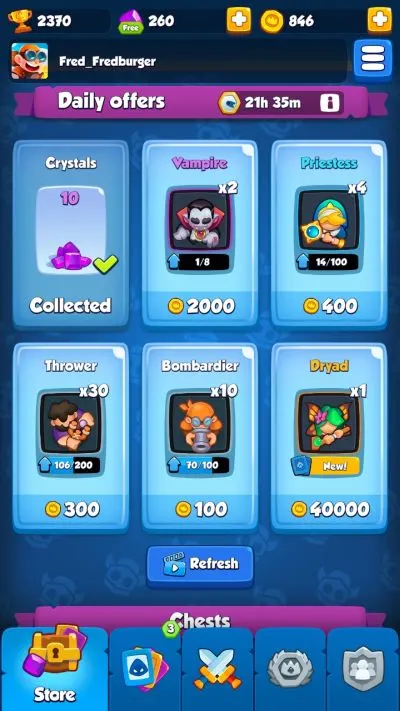
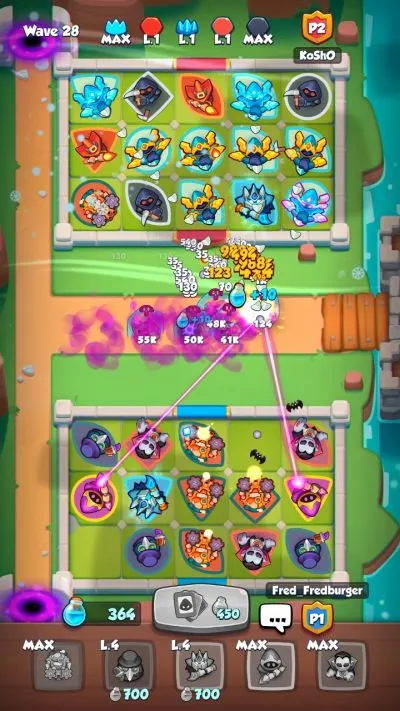
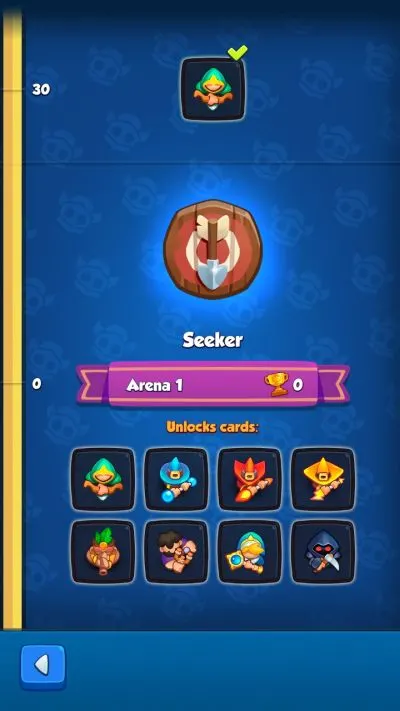
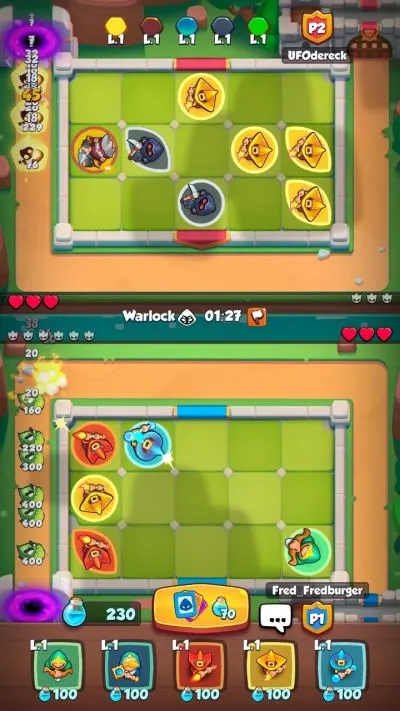
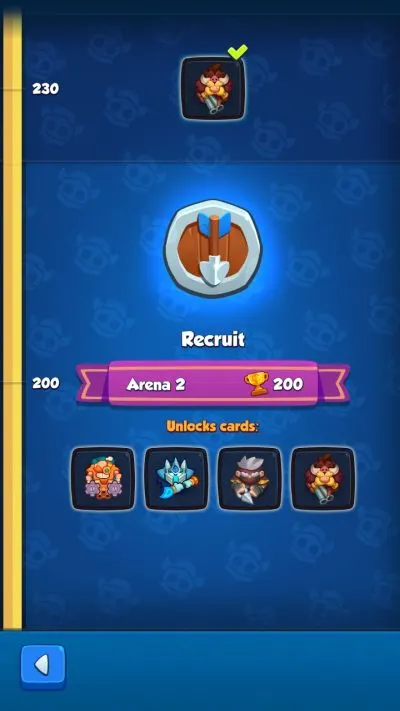
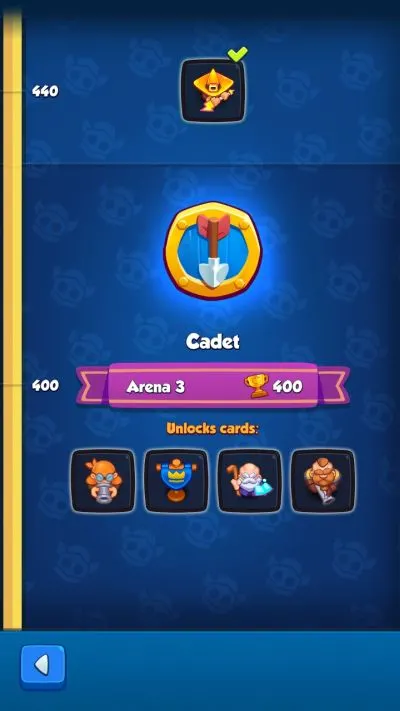
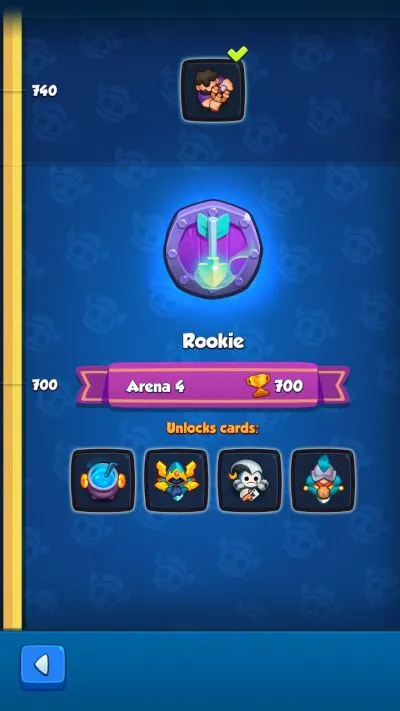
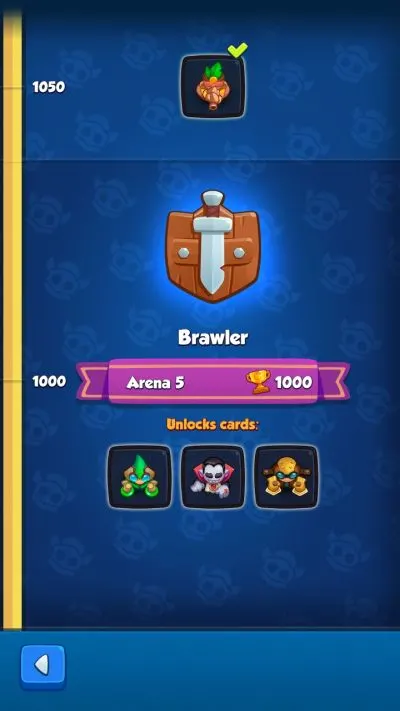
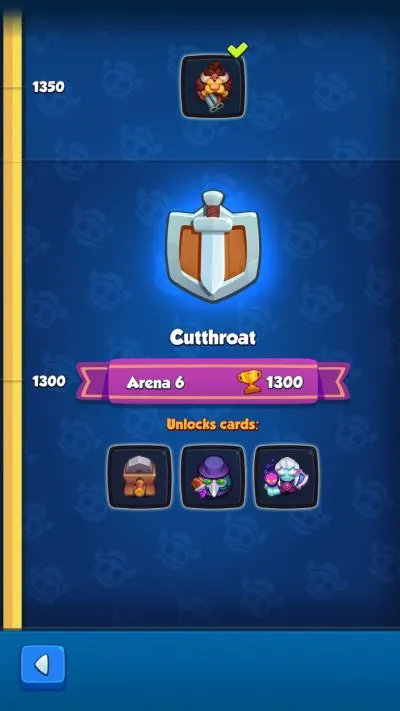
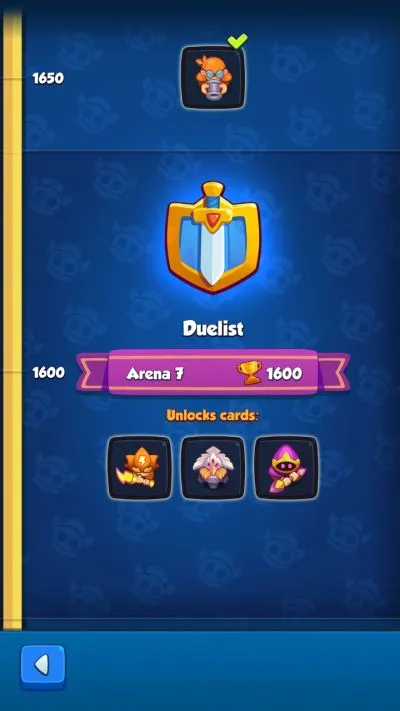
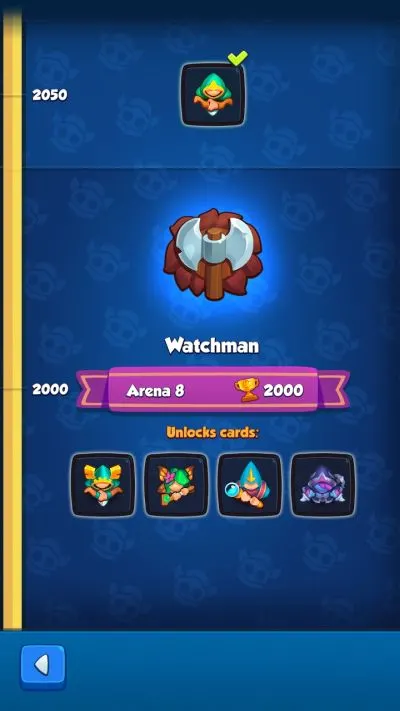
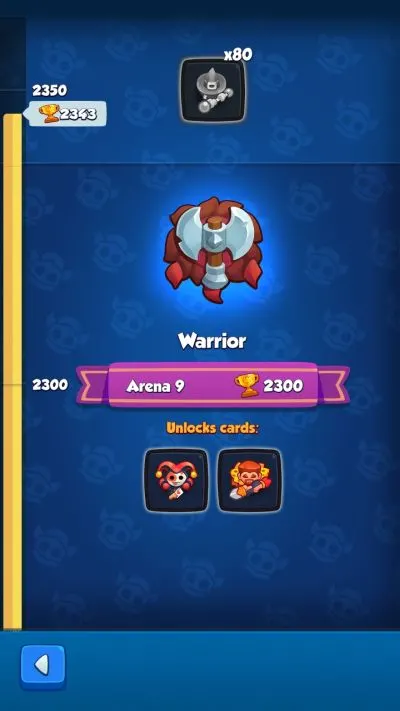
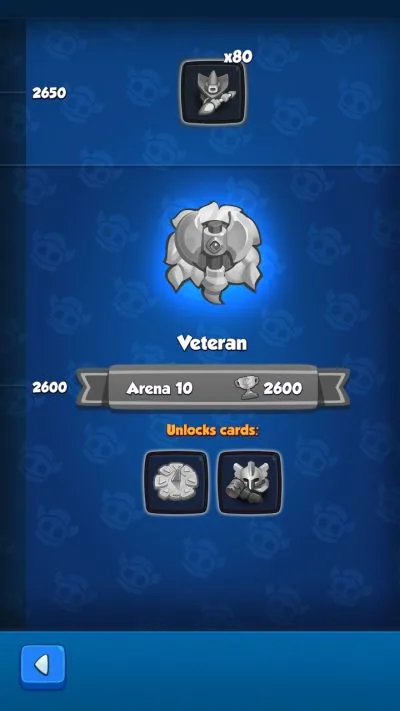
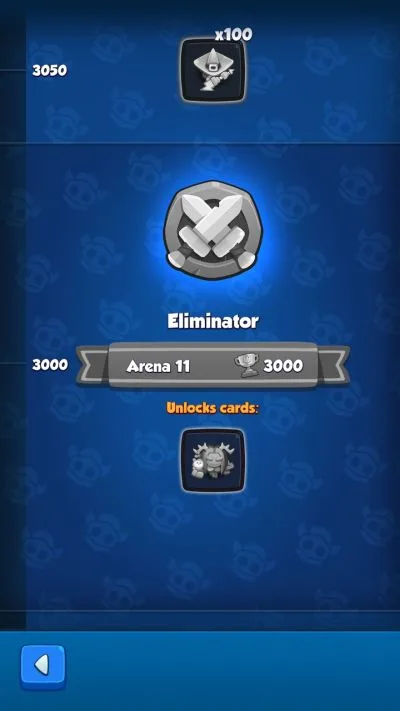
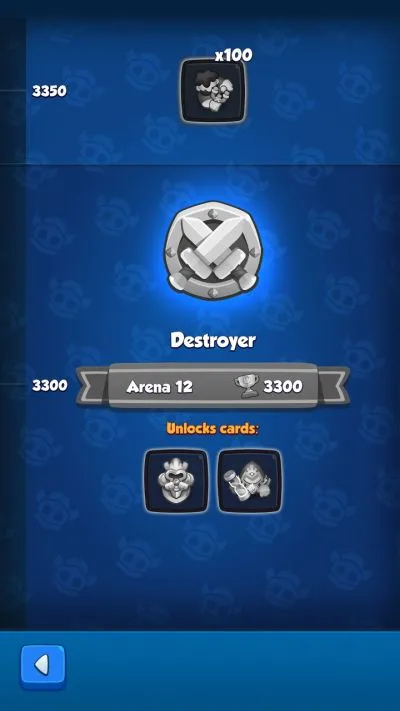
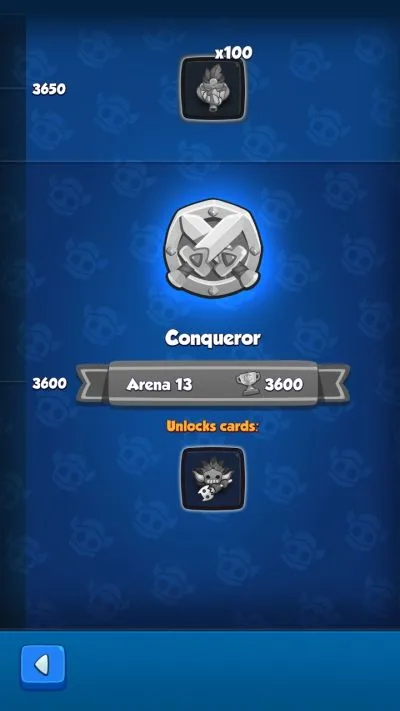
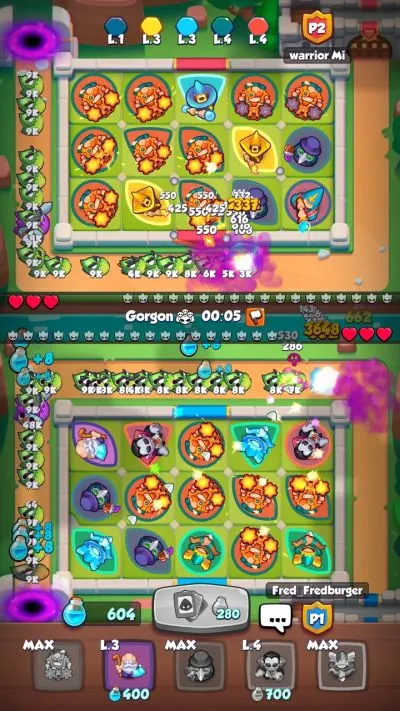
Hark
Thursday 18th of February 2021
Thank you for the guide and clear overview. I personally reconsidered the rogue due to the high damage increase in level per mana upgrade making it a solid damage dealer with random benefits